RIDGID 65R-C Handleiding
RIDGID
Niet gecategoriseerd
65R-C
Bekijk gratis de handleiding van RIDGID 65R-C (8 pagina’s), behorend tot de categorie Niet gecategoriseerd. Deze gids werd als nuttig beoordeeld door 53 mensen en kreeg gemiddeld 4.4 sterren uit 27 reviews. Heb je een vraag over RIDGID 65R-C of wil je andere gebruikers van dit product iets vragen? Stel een vraag
Pagina 1/8

Threading
1. Inspect the threader before use. Replace dies or any
other part that shows damage or wear. To insure high
thread quality, only use RIDGID replacement dies.
Worn dies can result in poor thread quality
and high handle forces.
2. Mount the pipe firmly in a pipe vise. When threading an
existing pipe, make sure it is secure and will not move.
Cut the end of the pipe cleanly and squarely using a
pipe cutter
(Figure 3)
.
To prevent tipping, long lengths of pipe
should also be supported with a pipe stand. Vise and
stands should be on level ground.
When working on a scaffold or lift, the oper-
ator should be properly secured to prevent injury in the
event of a fall.
Figure 3 – Cutting End Of Pipe
3. Ream the end of the pipe to remove any burrs that may
have been produced during the cutting of the pipe
(Figure 4)
.
Figure 4 – Reaming End Of Pipe
4. Adjust thread size for the size pipe to be threaded (refer
to previous instructions for thread size adjustment).
5. Adjust workholder:
65R-C: Turn gauge ring until desired pipe size corresponds
with mark on top of workholder
(Figure 1)
.
65R-TC: Turn gauge ring until desired pipe size is aligned
with locking cam
(Figure 2)
.
RIDGID®
5/14
Printed in U.S.A.
EC40741
999-998-280.10
REV. C
RIDGID®65R-C and 65R-TC Threaders are designed to
thread 1" to 2" pipe and conduit using a manually operated
internal ratchet.
Read these instructions carefully before
using this tool. Failure to follow all instructions may
result in property damage and/or serious injury.
Thread Size Adjustment
1. Place threader with workholder up
(Figures 1 and 2)
and unscrew workholder by turning counter-clockwise
until change plate is clear of posts.
2. Move post to desired pipe size. Screw workholder
clock wise until change plate slides over post.
3. Adjust change plate to desired thread size.
Standard Size Thread: Set change plate between the two
“Standard” marks.
Oversize Thread: For oversize (shallow) thread, set change
plate slightly below the “Standard” marks.
Undersize Thread: For undersize (deep) thread, set change
plate slightly above the “Standard” marks.
Figure 1 – 65R-C Threader
Figure 2 – 65R-TC Threader
65R-C & 65R-TC Manual Pipe Threader Instructions
WARNING
Gauge
Ring
Post
Change
Plate
Workholder
Jaw
Clamp
Screw
Standard
Marks
Release Cam
Lever
Gauge
Ring
Workholder
Jaw
Locking
Cam
Change
Plate
Lugs
Post
Workholder
WARNING
WARNING
WARNING

10. Apply a generous quantity of RIDGID Thread Cutting
Oil when threading
(Figure 6)
. Use of a lubricating oil
or a poor thread cutting oil can result in a poor quality
cut thread, leaky joints, short die life and high handle
forces.
11. 65R Threaders are jam-proof and will automatically
kick out and disengage the ratchet action when the
thread is complete.
12. Remove threader from pipe by turning release cam
lever to “OPEN” and spin threader back to the “STAN-
DARD” position. Loosen clamp screw or locking cam
and slide threader off the pipe.
or
Remove by turning the release lever to “OPEN” posi-
tion, loosening clamp screw or locking cam, and
pulling threader straight off pipe. Maintain close control
of the threader so the threads are not damaged.
Spinning the threader back to the “STANDARD” posi-
tion is not required.
NOTE! Clean any oil spill or splatter that is on the ground.
At the end of each job, always clean your threader
and store in a clean dry area to protect against
damage.
Changing Dies
1. Place threader in position as shown in
Figure 1
and
unscrew workholder upwards until change plate is
clear of post. Turn release cam lever to OPEN position.
2. Push post to the left past the 2" mark. Turn the threader
over and remove dies. If the dies stick, tap the ratchet
ring lightly behind the die.
3. Insert new dies making sure die numbers correspond
to the slot numbers. Replace complete die set. Move
post to engage dies.
Failure to replace complete die set may
result in poor thread quality and leaky joints.
4. Turn threader over and set post to desired pipe size.
Screw workholder down so change plate is between
the “Standard” size marks and you are ready to re -
sume threading.
Service and Repair
When servicing this tool, only identical
replacement parts should be used. Failure to follow these
steps may create a risk of serious injury.
If you have any questions regarding the service or repair of
this machine, call or write to:
Ridge Tool Company
Technical Service Department
400 Clark Street
Elyria, Ohio 44035-6001
Tel: (800) 519-3456
E-mail: rtctechservices@emerson.com
2
6. Turn release cam lever to the “closed” position. Slide
threader on the pipe with the workholder end first
(Fi -
gure 5)
. Center end of pipe in the throat of the dies.
7. Secure workholder on the pipe by tightening the clamp
screw
(Figure 1)
or the locking cam
(Figure 2)
.
Figure 5 – Sliding Threader Onto Pipe
8. Move the handle in a pumping action to thread the
pipe.
Make sure handle is clean and free from oil
and grease. This allows better control of the tool.
9. When hand threading, your weight should be above
the handle ensuring maximum leverage. If possible, do
not do all the work with you arms; use your weight. Do
not overreach. Keep proper footing and balance to
maintain better control.
Do not slide a pipe or “cheater” over the
handle to gain extra leverage. This practice can result in
serious injury.
NOTE! When using the 65-R Threader with the 300
Power Drive, manually start the thread (approxi-
mately one turn) before starting power drive.
Figure 6 – Applying Thread Cutting Oil
65R-C & 65R-TC Manual Pipe Threader Instructions
WARNING
WARNING
CAUTION
WARNING

3
65R-C & 65R-TC Manual Pipe Threader Instructions
For name and address of your nearest Independent Author -
ized Service Center, contact the Ridge Tool Company at
(800) 519-3456 or http://www.RIDGID.com
Fileteuse manuelle 65R-C et 65R-TC :
Mode d’emploi
Les fileteuses RIDGID®65RC et 65R-TC sont prévues
pour le filetage des tuyaux et gaines de 1 à 2 po de
diamètre à l’aide d’une clé à cliquets manuelle.
Lisez ces instructions soigneuse-
ment avant d’utiliser l’appareil. Le non-respect de l’en -
semble des consignes ci-devant pourrait entraîner
d’importants dégâts matériels et/ou de graves lésions
corporelles.
Réglage du pas de filetage
1. Positionnez la fileteuse avec son anneau de serrage
vers le haut
(Figures 1 et 2)
, puis dévissez l’anneau de
serrage en le tournant à gauche jusqu’à ce que la pla-
tine de réglage se désengage du poteau.
2. Amenez le poteau jusqu’à la section de tuyau voulue.
Vissez l’anneau de serrage jusqu’à ce que la platine de
réglage s’engage sur le poteau.
3. Amenez la platine de réglage à la dimension de pas
voulu.
Pas standard : Centrez la platine de réglage entre les
deux repères «Standard.
Pas surdimensionné : Pour obtenir un pas surdimension-
né (moins profond), descendez la platine de réglage légère-
ment en dessous des repères «Standard».
Pas sousdimensionné : Pour obtenir un pas sousdimen-
sionné (plus profond), montez la platine de réglage légère-
ment au-dessus des repères «Standard».
Figure 1 – Fileteuse 65R-C
Figure 2 – Fileteuse 65R-TC
Le filetage :
1. Examinez la fileteuse avant toute utilisation. Remplacer
les filières ou tout autre composant endommagé ou
usé. N’utilisez que les filières de remplacement RIDGID
afin d’assurer un filetage de qualité.
Les filières émoussées risquent de
produire de filetages de mauvaise qualité et de créer une
résistance excessive.
2. Les filières émoussées risquent de produire de file-
tages de mauvaise qualité et de créer une résistance
excessive.
(Figure 3)
.
Afin d’éviter les risques de renverse-
ment de l’ensemble, soutenez les tuyaux de grande
longueur à l’aide d’un porte-tubes. L’étau et les porte-tubes
éventuels doivent être installés sur un sol de niveau.
Tout utilisateur travaillant sur écha -
faudage ou élévateur doit être correctement sanglé en cas
de chute.
Figure 3 – Coupe de l’extrémité du tuyau
3. Alésez l’extrémité du tuyau afin d’éliminer toutes ba -
vures éventuelles laissées lors de sa coupe
(Figure 4)
.
MISE EN GARDE
Bague de
calibrage
Poteau
Platine de
réglage
Mâchoire d’anneau
de serrage
Vis de
blocage
Repère
«Standard»
Levier d’ouverture
de came
Bague de
calibrage
Mâchoire
d’anneau de
serrage
Came de
blocage
Platine de
réglage
Goujons
Poteau
Anneau de
serrage
MISE EN GARDE
MISE EN GARDE
MISE EN GARDE
Product specificaties
| Merk: | RIDGID |
| Categorie: | Niet gecategoriseerd |
| Model: | 65R-C |
Heb je hulp nodig?
Als je hulp nodig hebt met RIDGID 65R-C stel dan hieronder een vraag en andere gebruikers zullen je antwoorden
Handleiding Niet gecategoriseerd RIDGID
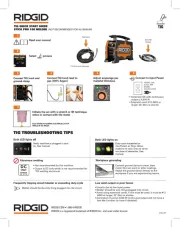
17 Juni 2025

16 Juni 2025

18 Augustus 2024

5 Maart 2024

5 Maart 2024

5 Maart 2024

27 Februari 2024

26 Februari 2024

26 Februari 2024

26 Februari 2024
Handleiding Niet gecategoriseerd
- Salta
- Petmate
- LELO
- Fusion
- BrightSign
- Seco-Larm
- First Alert
- Bugaboo
- Nils Fun
- Akrobat
- Ferrofish
- Zurn Wilkins
- Frequency Central
- Kugoo
- XP-PEN
Nieuwste handleidingen voor Niet gecategoriseerd
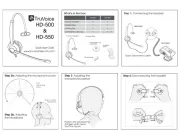
1 Augustus 2025
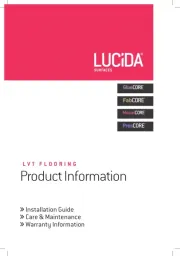
1 Augustus 2025
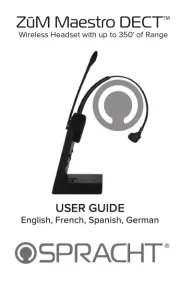
1 Augustus 2025
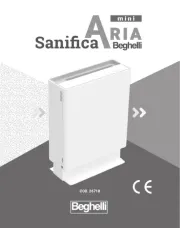
1 Augustus 2025
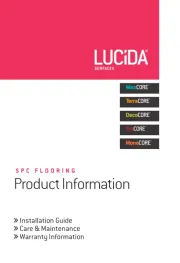
1 Augustus 2025
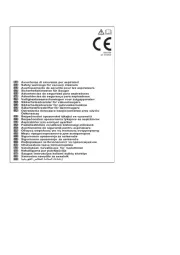
1 Augustus 2025
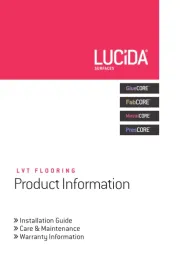
1 Augustus 2025
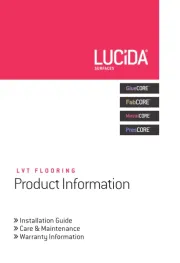
1 Augustus 2025
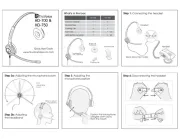
31 Juli 2025
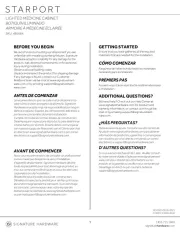
31 Juli 2025